An unorthodox start. Approaching the Accademia is easy, yellow signs at eye level encourage visitors. A bridge and an art gallery each bear the same name. It translates as Academy and was usually a place of study and learning for art, music or literature. So I’ll start here.
ACCADEMIA – La Carità Chiesa is the home of an art collection assembled from the houses, palaces, guilds and churches of Venice. The great artists Bellini, Carpaccio, Giorgione, Titian, Tintoretto, Veronese are all found here. A synopsis of Venetian art elegantly displayed in a series of rooms conveys the depth and talent of painting in the maritime republic of Venezia. It’s rich and deep and broad.
BARCA – this is Italian for boat and they come in all shapes and sizes in Venice. There’s a boat for every purpose; topo, sandolo, gondola. They are all powered by people, rowing with wooden oars. A barca a remi, typical Venetian rowing boat is ubiquitous in the lagoon. Several times a year there are regattas and teams from all of the lagoon compete for prizes. Every day in Venice you’ll see boats; ambulance boats, funeral boats, delivery boats and gondolas – the boats are all there defining the city and establishing it’s unique maritime heritage.
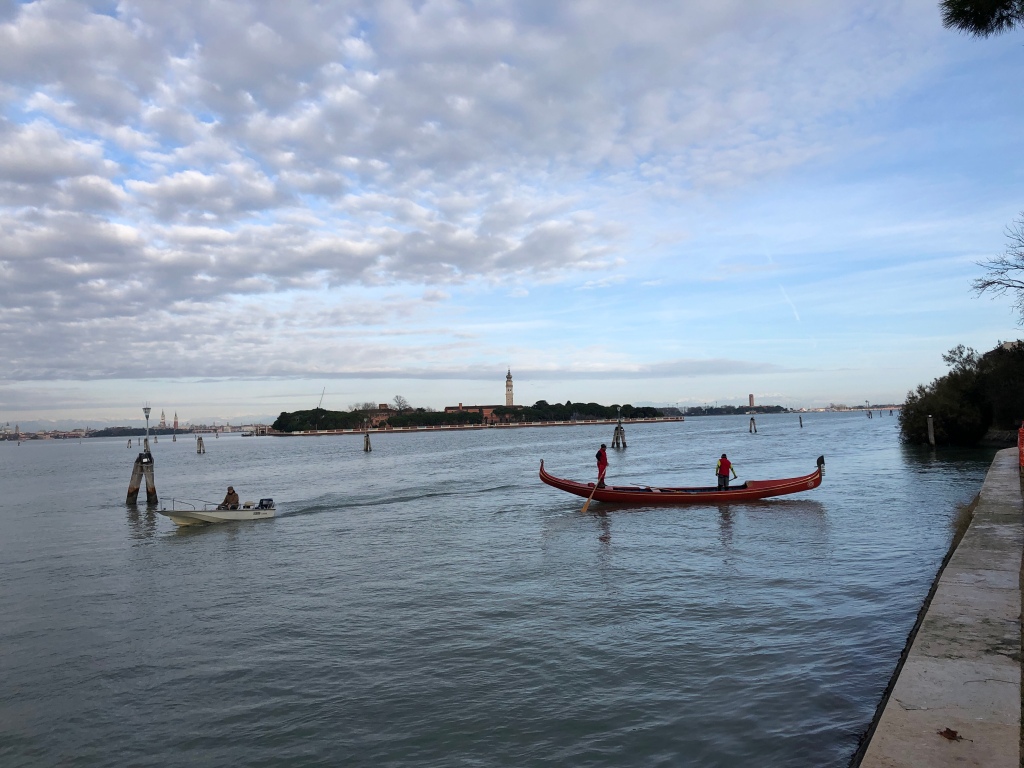
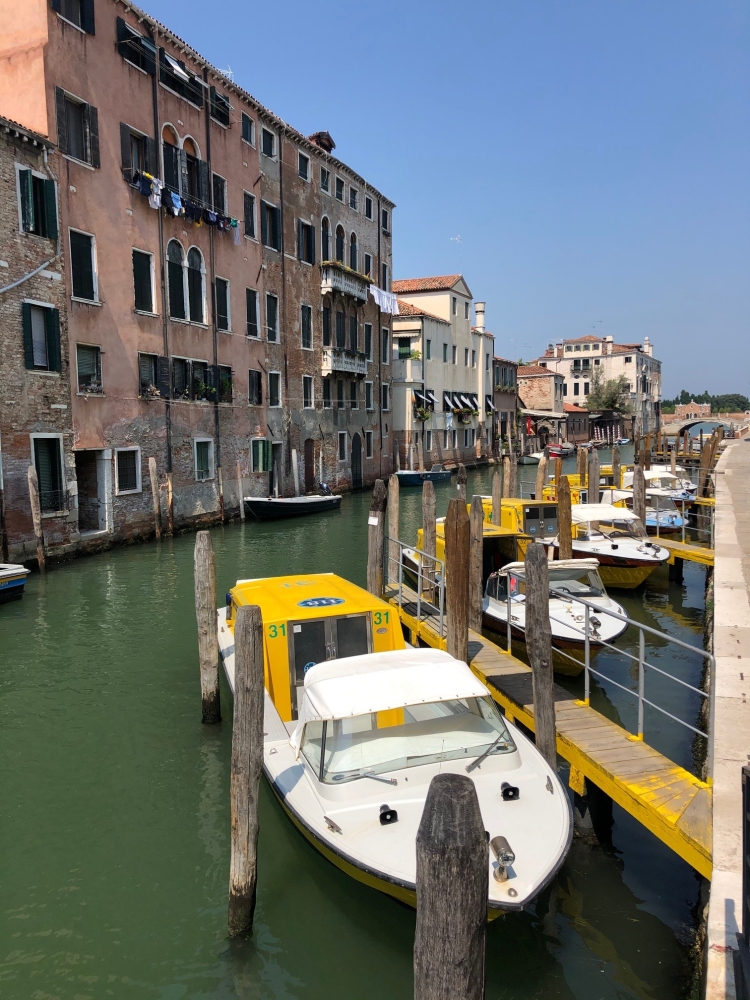
CANALETTO was inspired by Venice, the quality of the light radiating from sky to sea. The waters of the lagoon in perpetual movement, the whiteness of the stone, hauled block by block from Istria to sparkle in the midday sun. Canvases followed in great numbers, views of Venice. The ultimate souvenir for wealthy visitors. Canaletto’s paintings sprinkle the country houses of the British Isles. There’s a veritable horde in Buckingham Palace. A lasting testimony to the beguiling and enduring appeal of Venice.
DORSODURO is a district of Venice, one of six sestiere. It extends from San Polo and Rialto towards the Dogana or Customs Point. Here at the entrance to the Grand Canal was the cash office, the place where ships paid their dues. Imagine lines of desks, each with a clerk earnestly recording the cargoes arriving from far flung places. Velvets and silks from Constantinople, Spices and herbs from Alexandria, Olive oil from Monopoli, Grain from Sicily. Each clerk assiduously writing out a receipt of goods and demanding the necessary fees and charges.
FONDAMENTA a wide pavement that runs along the edge of the lagoon. A place for mooring boats, where people would meet and chat, buy and sell goods, smoke and gossip, scheme and plan. A place brimming with life and energy, joy and desperation.
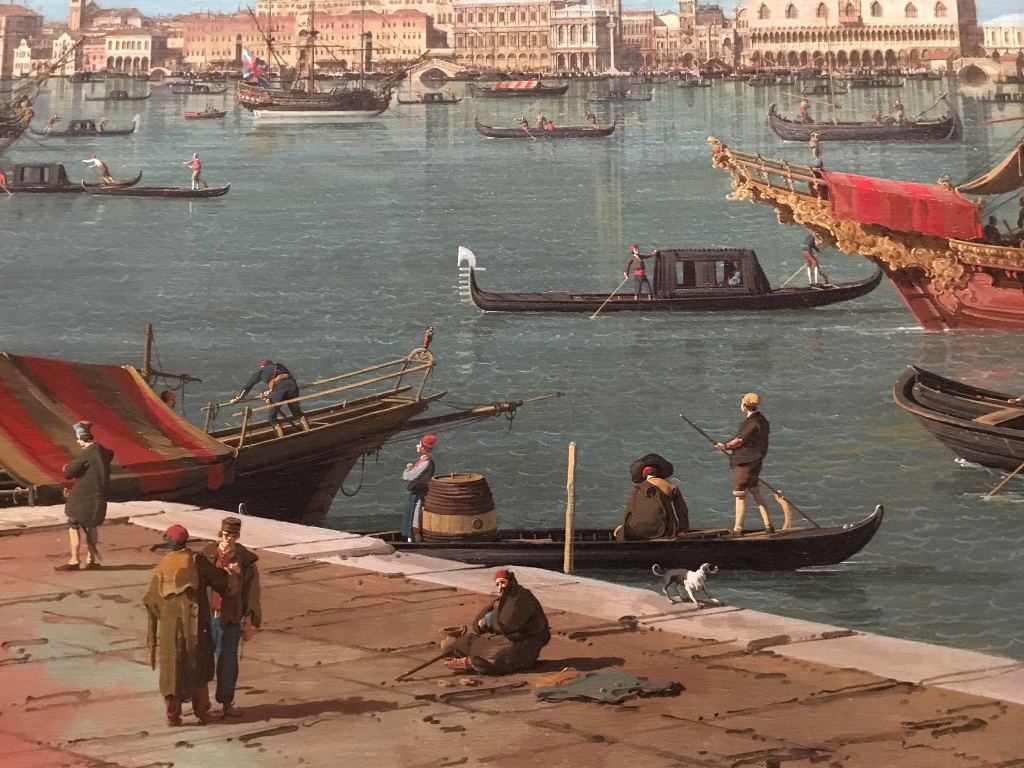
GIUDECCA is an island. It sprawls like a lazy snake running parallel with the Grand Canal, a suggestion of a river’s meander making its way across the lagoon to the sea. An island of working people, plumbers and bricklayers, hod carriers and housing. Noisy and crowded, serving the palaces and merchants across the water.
LAGUNA – the waters of The Venetian Lagoon have protected and enshrined Venice for centuries. A scintillating green and blue solution of shallow, lapping water, reflecting the sun’s rays from its ruffled surface. Nestling in this watery hinterland, a unique city was built on a series of mud flats. A watery haven, quite literally, protected by the lagoon and threatened by the sea, a delicious dichotomy of bounty and threat. A huge natural harbour offering safe anchorage for ships. A vast wetland sanctuary for all types of birds. Shallow and sometimes brackish waters for fish and molluscs, clams and vongole.
MERCATI – the markets bustled with life from dawn until dusk, selling everything imaginable. Loading and unloading barrels, boxes and sacks from every corner of the lagoon. Rialto was the beating heart of the market, noise and madness, grit and determination. The inspiration for Shakespeare when he developed Shylock’s character in ‘The Merchant of Venice’. Even today the fish market especially in springtime is a visual feast for the eyes, fabulous fish, crabs, prawns and seafood of all types, straight from the waters of the lagoon and the Adriatic beyond. In May the unique and prized ‘carciofi’ of Sant’Erasmo hit the stands, succulent and juicy, prized for their tender and slightly saline taste. So typical of Venice.
PALAZZO – hundreds of elegant palaces line the Grand Canal in Venice, at least three hundred, side by side along the most historic, architectural waterway in Italy. The palaces were private homes for wealthy Venetians, family homes but also places to entertain visitors from abroad and business associates. Every palace had an entrance from the canal and an entrance from the street. Important guests would always arrive by boat directly to the private landing stage of the palace. Only the staff arrived on foot!
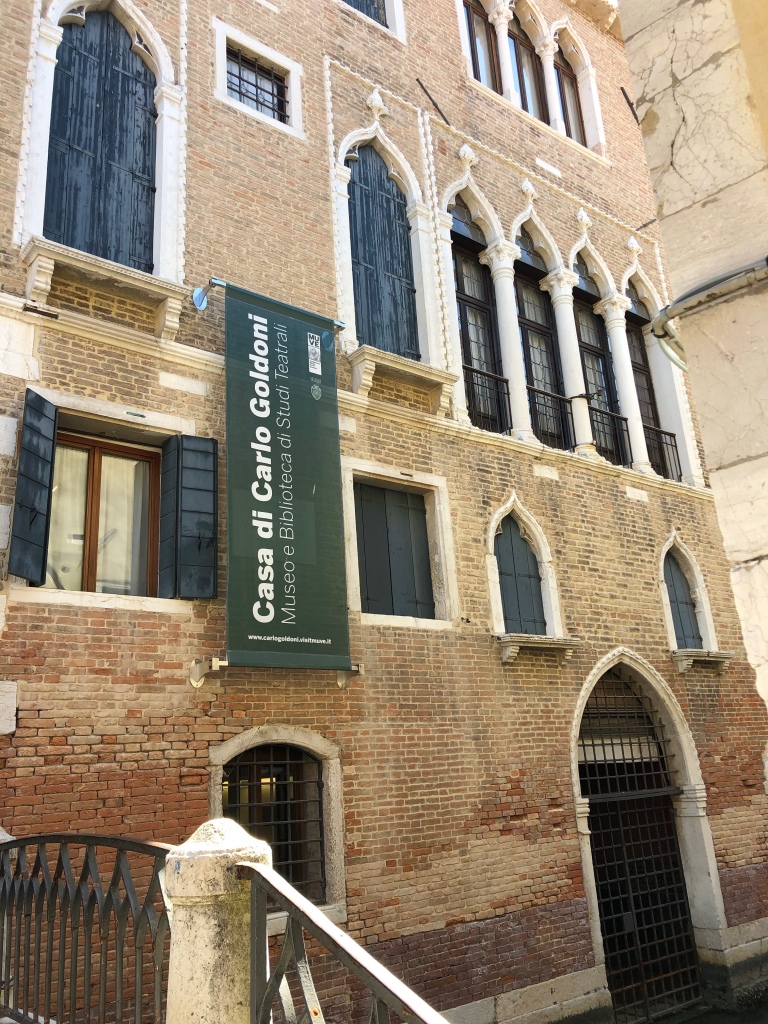
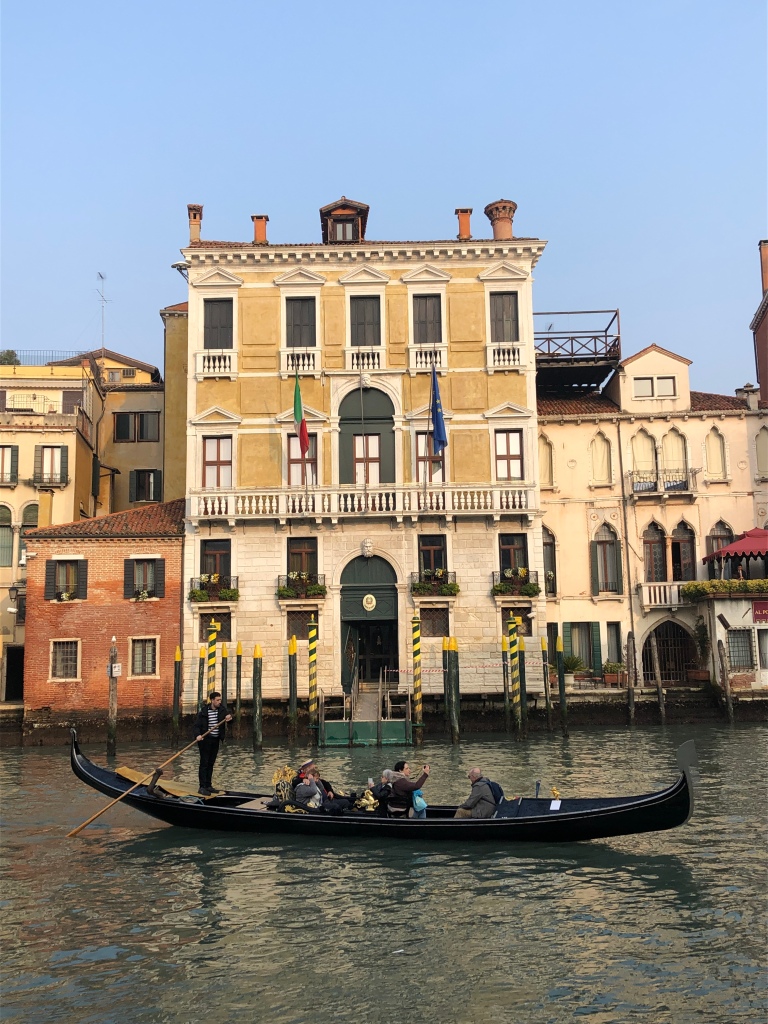
QUERINI – a wealthy Venetian family, one of the oldest and most prestigious families in the city. The Palazzo Querini was built adjacent to the Church of Santa Maria Formosa just east of Piazza San Marco and the Doge’s Palace. The Querini were an intelligent bunch, creating and building a library. When the last family member died in the 1860s they left the palace as a centre for learning, open to all. Today the library of the Querini-Stampalia is one of the most popular and welcoming in Venice. Perhaps the Querini were Venice’s first philanthropists.
QUARANTENA – the term Quarantine originated in Venice. As an international trading city from the 12th century onwards, ships arrived in Venice from all corners of the Mediterranean. The plague and other noxious diseases arrived in Venice from time to time. The city recognised the need to hold ships suspected of carrying disease at the edge of the lagoon, originally for a period of thirty days, later extended to forty days. The Italian word for forty is quaranta, and the term became synonymous with a period of isolation enforced on crews and vessels prior to being permitted to set foot on foreign shores.
RIALTO – The most famous bridge in Venice links the districts of San Marco and San Polo, lined with small shops, the bridge spans the Grand Canal. The shallow steps leading up to the top of the bridge have been worn smooth over the years by the Venetians and visitors to the city. Shylock, the money lender would meet his customers in the shadows of the Rialto Bridge. But beware the interest rate charged whilst always high was usually negotiable.
SCHIAVONI – Riva degli Schiavoni was one of the busiest waterfront piers in the city of Venice. Just a few paces from the Doge’s Palace and San Marco. Crowded with people and parcels, morning, noon and night. When Carlo Goldoni, the famous playwright arrived back in Venice, after a number of years, he described the vibrancy and vitality of his home town. The smell of food cooking in the streets, wine pouring, friends joking. Traders shouting, people drinking and dancing, children romping. Folks from Greece, Turkey, Croatia and Armenia laughing, debating, playing cards. All this in the early hours of the morning. Venice was the original city that never sleeps.
SOTOPORTEGO – An archway or covered alley way leading from a square into another narrow walk way (these walk ways are known as ‘calle’ in Venetian). The ‘sotoportego’ literally means under the door frame or under the porch. There are numerous ‘sotoportego’ archways in Venice linking one area with another. They were a necessity in a city where buildings covered every inch of the habitable area. A ‘sotoportego’ provided access to people and hand carts, even if there was a palace above and to both sides of the alley way. The ‘sotoportego’ often has a colourful names that helps us to imagine what happened here in days gone by. For example ‘Sotoportego del Carbon’ which translates to ‘Archway of the Coal’. Another favourite is ‘Sotoportego dei Preti’ which is Archway of the Priests.
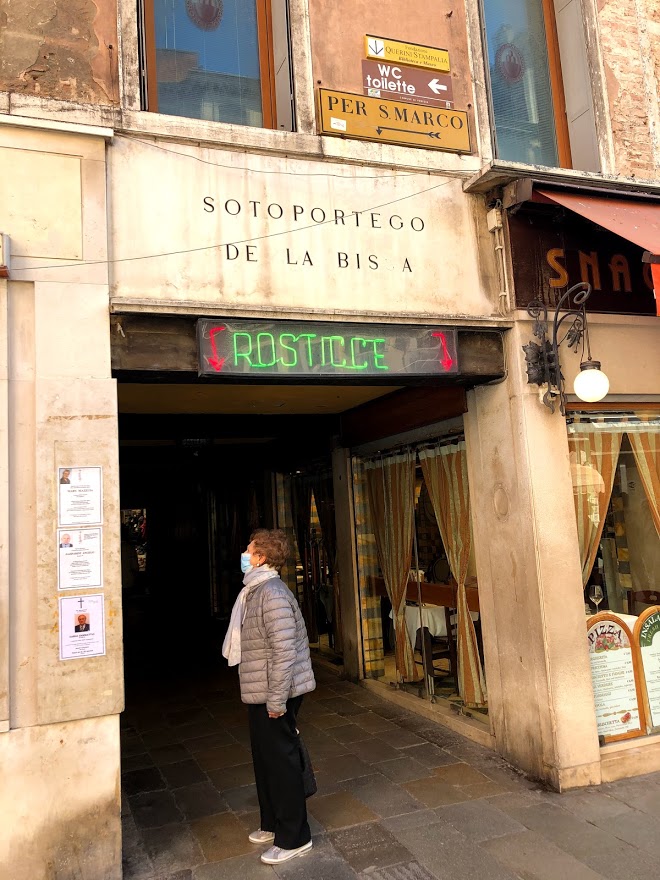

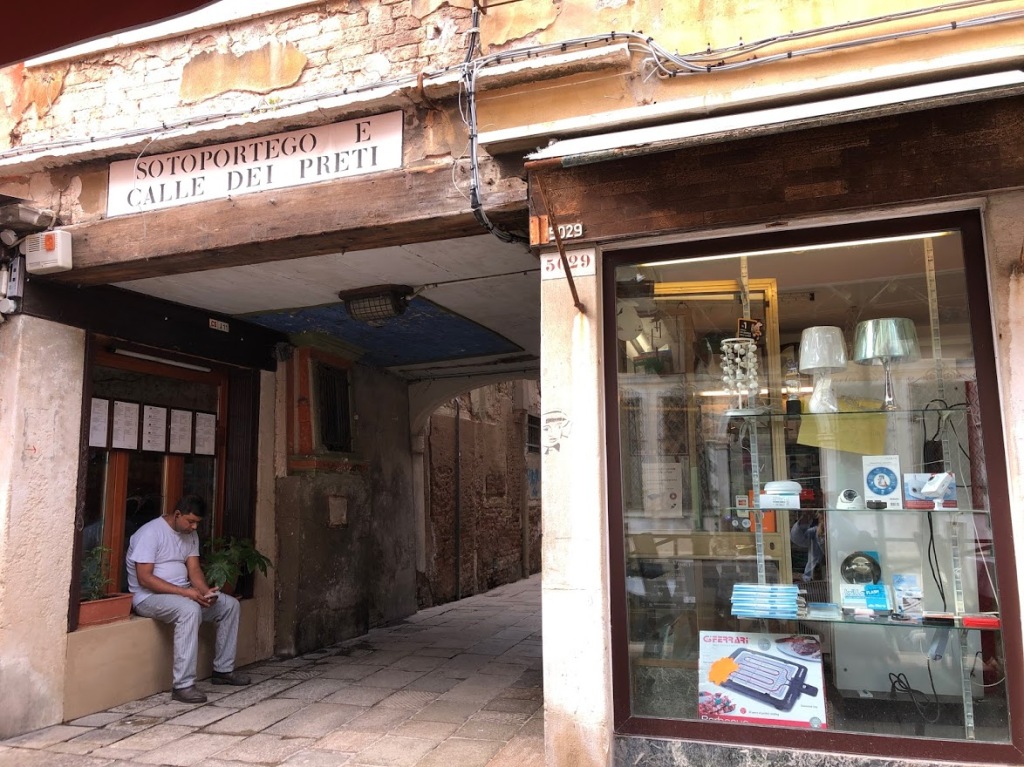
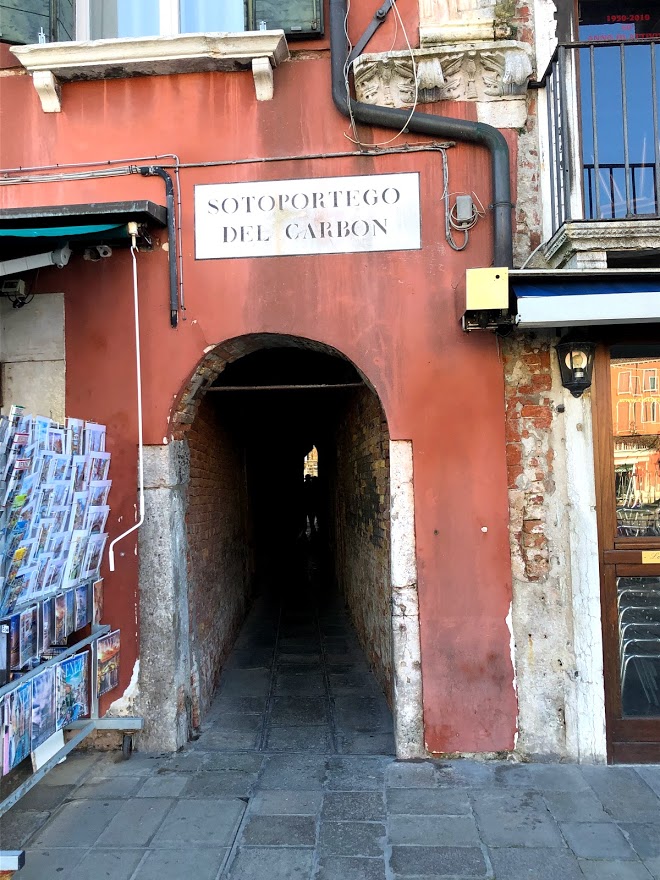
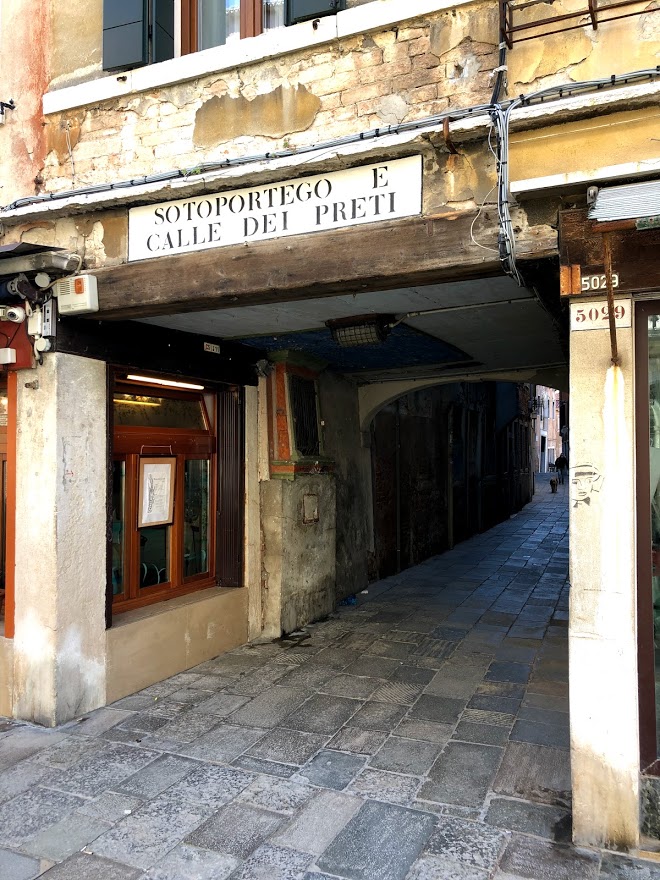
TEDESCHI – it’s the Germans and their timber yard at the Rialto. Venice was built on a series of mud flats, meandering like stepping stones from the edge of the lagoon towards the open sea. These mud flats were shifting sands, quite literally. They had to be consolidated and strengthened to provide solid foundations for building. The Venetians did this by importing logs from the mountains to the north. These logs were floated down the rivers to the lagoon where they were loaded and sorted in the Fondaco dei Tedeschi, the German Warehouse. The Fondaco dei Tedeschi was a timber exchange, where timber was stored, weighed, examined and sold. In the shadow of the Rialto Bridge, this is a building that has seen it all over the years. It’s seen them come and it has seen them go.
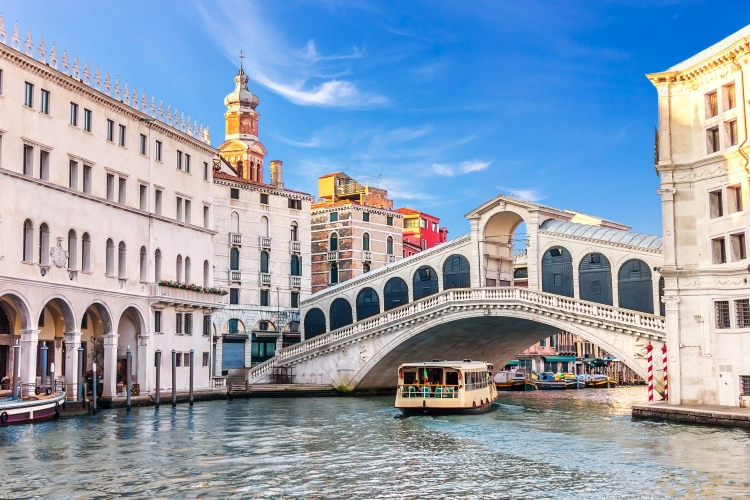
VENEZIA – La Serenissima, a unique trading republic, built in the middle of a lagoon, by a small group of tough and independent people, who created the city from nothing. Originally fishermen, living in timber huts, then boat builders and finally traders. The Venetians were canny and resilient, they still are, they created a trading empire that stretched from Venice to Constantinople in the east. The Venetians controlled all of north-eastern Italy, including Verona, Padova and Trieste. In the Mediterranean the Venetians controlled Cyprus and Crete and the island of Corfu along with the whole of the Dalmatian Coast (modern day Dubrovnik). At home in the lagoon, the Venetians developed public buildings, churches and squares (campos). As ships flowed into the lagoon so too did money. The Venetians became rich, and magnificent palaces were constructed along the banks of the Grand Canal.
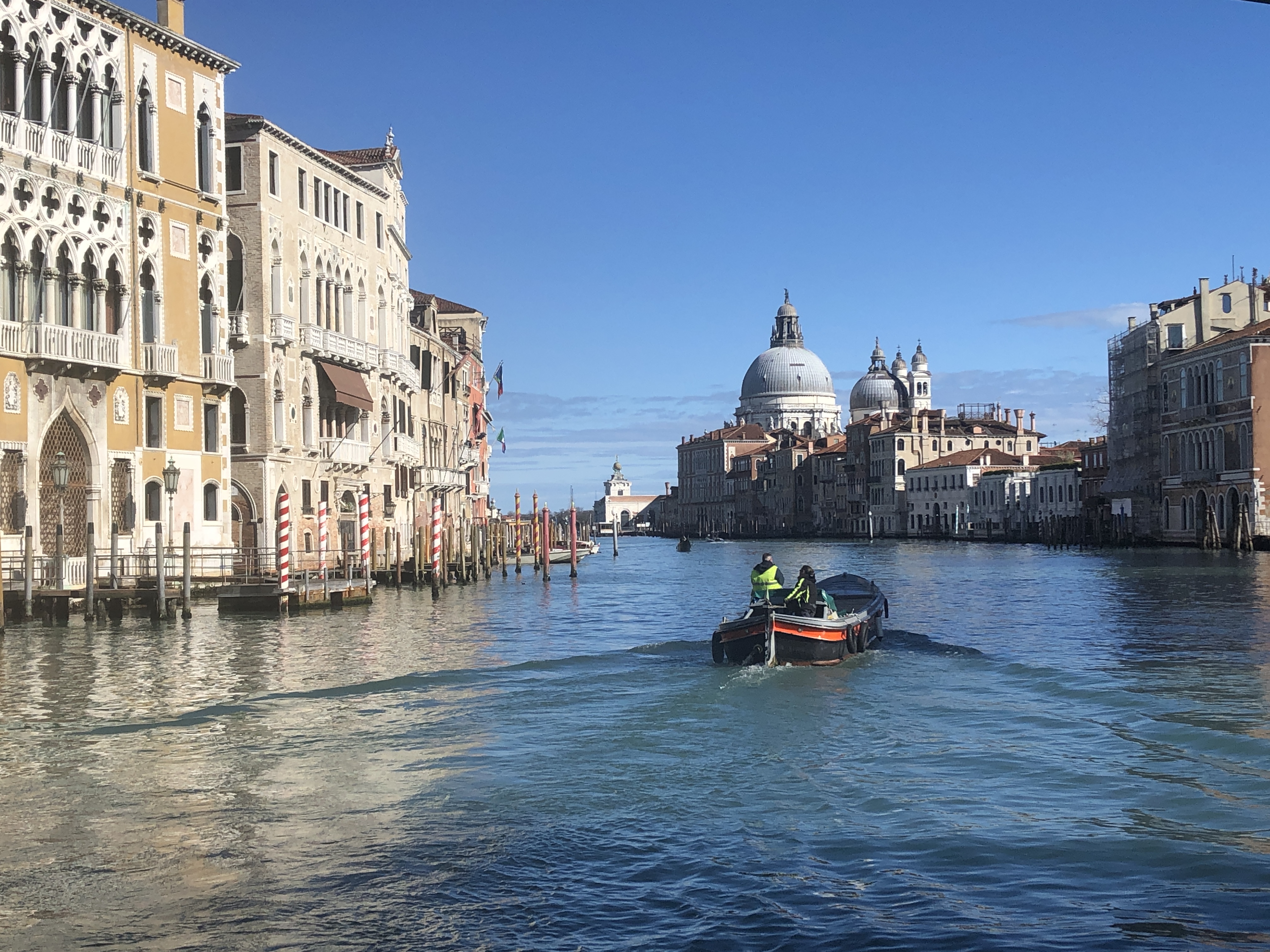
WEDDING – technically ‘matrimonio’ in Italian. But there isn’t a ‘w’ in the Italian alphabet so I thought I’d cheat with the fabulous, fairy-tale wedding that I was fortunate to experience just one year ago, at the peerless ‘Cipriani’ Hotel on Venice’s Giudecca island. The views across the lagoon to San Marco are superlative. A young Venetian couple were determined that their special day should be thoroughly Venetian – they totally succeeded. You can read the full story here: A Perfect Wedding in Venice.
XE – in Venetian dialect xe = e in Italian. The Venetian dialect is difficult for visitors to understand, it was a means of keeping strangers at a distance. An unfamiliar language. A perfect example might be as follows, a Venetian might say to you……..’No xe vero ti xe bugiaro?’ which means ‘Is it true you are a liar?’ or in Italian you’d say ‘Non e vero sei bugiardo’. The visitor would suspect that they had just been insulted, but they couldn’t be certain. A perfect way of excluding a visitor from conversation if necessary.
ZATTERE – the most scenic waterfront in Venice, this fondamenta is lined with elegant shipping offices including the magnificent Adriatica Building and the wonderful Baroque church of The Jesuits. For me this is the true beating heart of Venice. Many Venetians choose to live here. It’s a neighbourhood of elegant apartments, art galleries and funky little artisan shops. Across the water on Giudecca is the Fortuny factory. They make fabulous silks and rich, embroidered fabrics typical and unique to the city of Venice. Mariano Fortuny the founder was from Spain. He was enchanted by the beauty of Venice, the colours and views. The unique combination of sky and sea. He wasn’t the first and he certainly won’t be the last. To discover more about Fortuny: Venice – Fashion, Fortuny, Silk dresses and Downton Abbey

Please indulge my idiosyncratic wander through the alphabet of Venice. A purely personal glimpse of a city that has intrigued me for years. ‘Veneziani sono furbi‘ a friend said to me once, this means the Venetians are crafty, sly, devious even. Maybe they are and maybe they are not, but what they are is hard-working, tough, resilient and kind. If I needed help I know who I’d turn to in a crisis without a second thought. It would be a Venetian, as we say in England, any day of the week. That means always!

- Notes:
- I’ve written about the Accademia Art Gallery here: Venice – Accademia Art Gallery
- Canaletto and his paintings of Venice were hugely influential in the 18th century, every aristocrat wanted one: Canaletto and Venice
- Quarantine originated in Venice – here’s my article: The origins of the term “quarantine”
- The Italian obsession with boats is a necessity. Venice – from cradle to grave features Venice hospital and the ambulances parked outside!
- There are so many types of boats in the Venetian Lagoon. Here’s a link to the traditional types of boat. There’s many to choose from: https://digilander.libero.it/andrelisa/Barche%20a%20Venezia.htm
- A purely personal meander through Venice! I hope you enjoyed it.
- Over the last five years I’ve written over two hundred articles about Venice, The Alps, British Isles and the philosophy of the journey – discover more by visiting: www.greyhoundtrainers.com
- I also run a specialist travel company www.grand-tourist.com
- For the perfectly curated Italian journey contact me – I’ll create something just for you.
- Happy Reading – let’s keep on dreaming!
- Prepared and written: May 2020
- Updated: November, 2020 and April, 2021
Note: All photos www.greyhoundtrainers.com except Rialto and Fondaco dei Tedeschi (shutterstock)


Hello,
When are you planning your next small group tour to Venice?
Thank you, Alice
LikeLiked by 1 person
Hi Alice – for Venice realistically I think it will be April 2021 – although I’d love to include Carnival (which is February). I’m definitely doing a small group to Sicily in October 2021 – here is the itinerary: https://wp.me/p5eFNn-5hg thanks for reaching out. Contact me any time at: janet@grand-tourist.com
LikeLiked by 1 person
Another winner, Janet! you really bring Venice to life, both alphabetically, visually and verbally. Thank you so much for this excellent read. May your pen never run out of ink, or your mind,out of memories!
John
LikeLiked by 1 person
Wow–thanks for bringing back to the two memorable trips we’ve taken to Venice together. I loved the bells in the background–brings back to mind the tinntinnabulation I experienced at the top of the bell tower of St. Mark’s Cathedral at noon! What a thrill!
LikeLiked by 1 person
Thanks MLP – I wanted to share a little joy!!! O
LikeLiked by 1 person
Thank you Janet for another lovely and well-researched post. Beautiful photos too!
LikeLiked by 1 person
Hi Sandra – I wrote it out of my head actually!! That’s why I said it was personal – it really is……beautiful Venice will need all the support we can give….I SO appreciate your kind comments – thank you xxxx
LikeLiked by 1 person
Hi Sandra – just to let you know I’ve re-shared your lovely post about Oxford. I’ve added a bit of commentary of my own. I was an undergraduate at Oxford from 1980-1983 and have many fond memories. With fond thoughts from London to you in the US. My e-mail is janet@grand-tourist.com if you’d like to be in touch via e-mail. It’s a pleasure to read well written and coherently constructed articles. Thank you.
LikeLiked by 2 people
Thank you so much Janet. I am flattered by your generous words. Attending university as an undergraduate at Oxford would have been a dream come true for me. (That would have been several years before you!) I’m actually looking at more continuing education options for the future, if we ever return to any “normalcy.” I will be in touch by email!
LikeLiked by 1 person